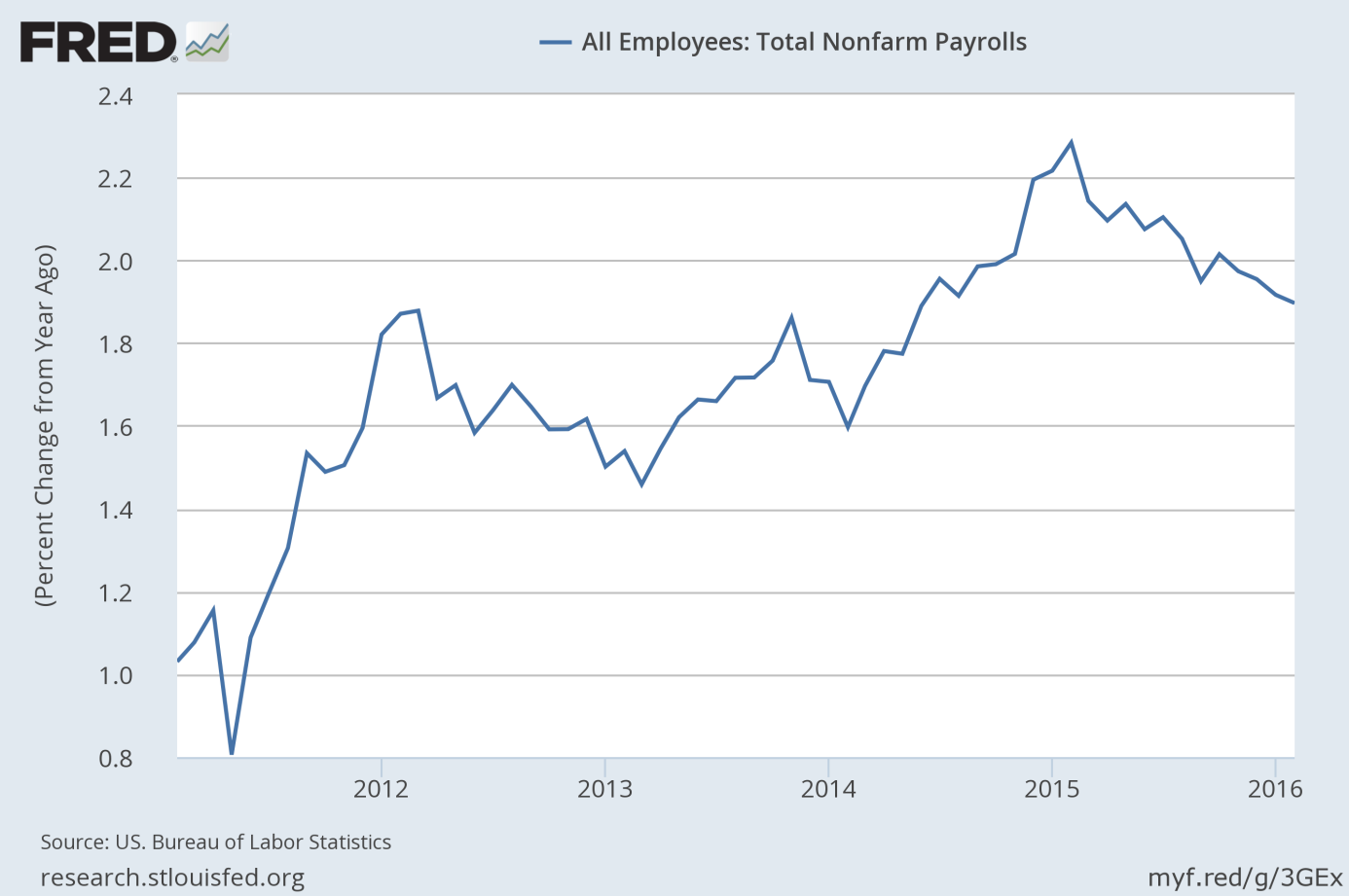The U.S. economy added 242,000 jobs in February. What does it imply for the Fed policy and the gold market?
Pace of Hiring Accelerates
Total nonfarm payroll employment rose by 242,000 in February, according to the U.S. Bureau of Labor Statistics. Therefore, the pace of hiring in the U.S. accelerated significantly compared with 172,000 job gains in January (after revision). Importantly, the recent job gains were much higher than expected (190,000). Additionally, the change in total nonfarm payroll employment for December and January combined was revised up by 30,000. The higher-than-expected increase could ease the worries about the U.S. economy’s health. Some FOMC members also became more positive recently. The Dallas Federal Reserve Bank President Robert Kaplan said on Friday that he expects solid growth in the U.S. economy this year and does not expect the economy to fall into recession.
Probably the most positive news is that labor-force participation and the employment rate rose again. The labor-force participation rate, a measure of the active portion of an economy’s labor force (i.e. people who are either employed or are actively looking for work) moved up 0.2 percentage points to 62.9 percent, the highest level in more than a year. The employment-to-population arte, a measure of the proportion of the country’s working-age population that is employed, also increased 0.2 to 59.8 percent.
Signs of Weakness
However, there are also some signs of weakness. The most important thing is that although the economy added 242,000 jobs, we witnessed further slowing down. The chart below shows that annual growth started slowing in February 2015. It seems that the downward pressure on growth continues so the employment gains may be lower in the future.
Chart 1: Total nonfarm payrolls as a percent change from year ago from 2011 to 2016.

Unemployment was unchanged at 4.9 percent (however, the broader measure of unemployment, the so-called U-6, dipped to 9.7 percent from 9.9 percent). The average hourly wage fell 0.1 percent to $25.35 (but rose 2.2 percent on an annual basis). The amount of time people worked each week dropped 0.2 hours to 34.4 hours, hitting the lowest level in two years.
Moreover, job gains occurred in sectors such as retail, hospitality or education and health services that do not pay very well. Contrary, mining and manufacturing, which usually offer higher-paid jobs, contracted, down 18,000 and 16,000, respectively. Transportation and warehousing also eliminated some jobs. The shifting composition of employment (cuts in highly-paid jobs and gains in lower-paid jobs) explains why the average hourly wage fell despite the rise in employment and the recent increases in minimum wages across several states. Additionally, most of the job gains were concentrated in part-time positions. In other words, the quality of American jobs is deteriorating (or American started to prefer more flexible jobs thanks to the rise of the sharing economy).
Conclusions
The bottom line is that the February Nonfarm Payroll was impressive, although some weakness remained. The U.S. economy added more jobs than expected, but wages have not rebounded yet. The accelerated pace of hiring could ease fears about the U.S. recession and revive the odds for fresh rate hikes in 2016. However, the Fed is focused on average hourly earnings to determine whether wage-driven inflation is rising. Therefore, the overall report was not strong enough to warrant a Fed hike this month. This is perhaps why the jobs data triggered a mixed reaction in the markets. The U.S. dollar declined, while stocks ended with gains. Gold prices experienced a seesaw session, but ended flat. Gold’s resistance is impressive, given the fact that payroll reports were an important driver of the gold prices last year. Now, the main focus will be on the Fed’s upcoming meeting in March.
Disclaimer: Please note that the aim of the above analysis is to discuss the likely long-term impact of the featured phenomenon on the price of gold and this analysis does not indicate (nor does it aim to do so) whether gold is likely to move higher or lower in the short- or medium term. In order to determine the latter, many additional factors need to be considered (i.e. sentiment, chart patterns, cycles, indicators, ratios, self-similar patterns and more) and we are taking them into account (and discussing the short- and medium-term outlook) in our trading alerts.
Thank you.
Arkadiusz Sieron
Sunshine Profits‘ Gold News Monitor and Market Overview Editor
Gold News Monitor
Gold Trading Alerts
Gold Market Overview



